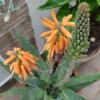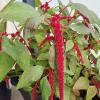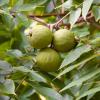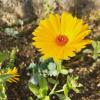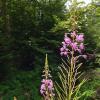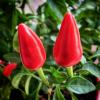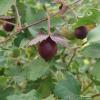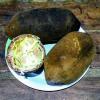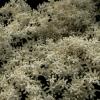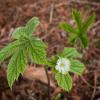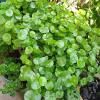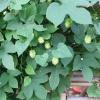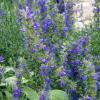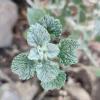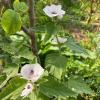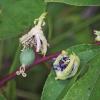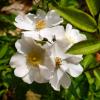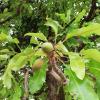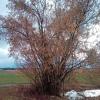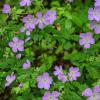The native Aloe Vera (Aloe Barbadensis) plant gets its remarkable therapeutic properties from more than 200 biologically active compounds that work together like individual members of a finely tuned orchestra.
Plants
Amaranthus caudatus is a plant with beautiful flowers and a rich history. It is used in unique ways in various cultures. The common name Amaranth comes from the Greek word for “never-fading flower.”
Originally from the Far East, where they preceded the cultivation of rice and sugar cane, banana trees conquered Africa and then reached the Caribbean and Central America.
Black Walnut (Juglans Nigra) is also known as American walnut. The tree is one of the most sought-after native hardwoods.
The tree grows in small natural groves and is frequently found in mixed forests. It thrives well on moist alluvial soils.
Named by the ancient Romans, Calendula (Calendula Officinalis) was considered to have a powerful magic.
Camellia sinensis (L.) "Kuntze" or "Thea sinensis L.". Green Tea is a small Asiatic Indonesian tree, highly ramified and reaching heights of up to 5 to 10 m.
Canadian Willowherb (Epilobium Angustifolium L) is a native plant of Canada's northern forests. Aboriginal peoples have long used it as a source of food and medicinal preparations.
Capsicum (Capsicum Frutescens), Cayenne, derives its name from a Greek word meaning 'to bite,' in alluding to the fruit and seeds' hot, pungent properties.
The Coneflower (Echinacea Angustifolia) plant is a native of Texas and the western Great Plains. Both the purple flower and the root are used to extract the active components.
The cotton plant Gossypium Herbaceum belongs to the Malvaceae family and is known as" nature's food and fiber plant." Analysis of cotton fibers found in an archaeological survey of India showed that they were produced as early as 3000 BC.
The cupuacu (Theobroma Grandiflorum; Cupuaçú) is a tree whose fruit has been used since very old times, which apparently goes back to pre-Columbian civilizations. In its natural habitat, the cupuacu is found in the primeval wet forests of the Amazon and can grow to over 15 meters.
Elder flower (Sambucus Nigra) has been used for blood poisoning, snake bites, and as a fever antiseptic. It is known as the herbalist's cosmetic tree since every part of the plant is said to aid in beautifying the complexion.
Ginger (Zingiber officinale) has been one of the best-known species since ancient times and is widely used in China and India. Although the wild species has not been found, it is believed to have originated from Malaysia, India, Sri Lanka, and Indonesia.
The word "Ginseng" (Panax root) means "the wonders of the world." Accordingly, Ginseng extract is said to be beneficial in treating everything from nervous exhaustion, indigestion, asthma, diabetes, anemia, and impotence to stimulating the function of brain cells and improving visual and aud
Historically, Goldenseal (Hydrastis Canadensis) was used for its strong antiseptic qualities, and it was also ingested for a variety of ailments. Topically, it was used to treat eczema and other skin irritations, as well as eye inflammations.
Gotu Kola (Centella Asiatica; also known as Hydrocotyl) is a weakly aromatic-smelling plant native to parts of India, China, Indonesia, Sri Lanka, the western South Sea Islands, Australia, Madagascar, and southern and middle Africa (Bonati 1980, Madaus 1938).
The Grapefruit (Citrus Paradisi) was first noticed in Barbados in 1750; by 1880, it had become an important commercial crop in Florida. Grapefruit is a good source of flavonoids, water-soluble fibers, potassium, vitamin C, and folic acid.
As a tea, Hops (Humulus Lupulus) relaxes the nervous system and soothes the nerves. It is also considered a diuretic and an appetite stimulant. Hops is also purported to cleanse the organs and blood.
Hyssop (Hyssopus officinalis Lam.) is a name of Greek origin. The herb was used for cleaning sacred places. It is alluded to in the Scriptures: "Purge me with Hyssop, and I shall be clean."
Horehound (Marrubium vulgare L., Lamiaceae) is a well-known herbal medicine of the Mint family that is considered one of the most popular herbal remedies for chronic coughs and colds.
This herb (Althaea officinalis) is not an ingredient in the popular campfire treat, although the original marsh mallow confection was the French pate de guimauve, made from the plant's root.
The Common Granadilla (Passiflora incarnata) is native to Jamaica and South America. The Aztec Indians believed it had medicinal and erotic powers.
What do the Andalusian Spanish city of Granada, the Grenadine syrup well known to little ones, and those military projectiles that are never good to encounter on your road have in common?
Rose Hip (Rosa aff. rubiginosa L./Rosa Canina) is one of the wild varieties of rose trees in Asia. It spread to Europe and was then introduced by the Spaniards to South America around the 15th Century. Nowadays, Rose Hip (called "Rosa Mosqueta" by the Chileans) is mainly found in southern Chile.
The shea tree (Butyrospermum Parkii; also called Free of Life or Butter Tree) grows only in the African savannah region, in a well-defined zone from Guinea in the west to Central Africa in the east; you can see the trees: 10 – 20 m in height, with very dark leaves reminding of those of an oak tre
The Latin name of the sunflower plant, Helianthus annuus, comes from the Greek words for sun, helios, and flower, anthros. Annuus means that the plant is annual.
Fond of damp places, the white willow (Salix Alba) must, therefore, treat "wet feet" (understand the consequences that result, that is to say, fever and joint pain).
This common North American woodland plant (Geranium Maculatum) was used by the American Indians for its astringent value in treating piles, chronic dysentery, and children's cholera.
